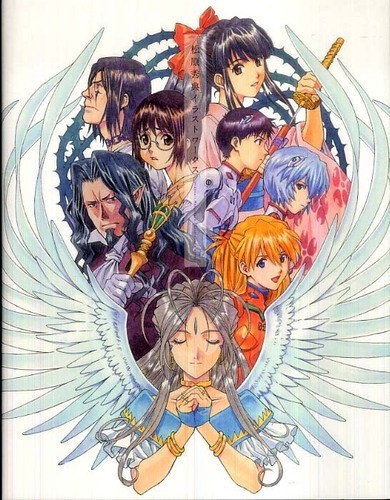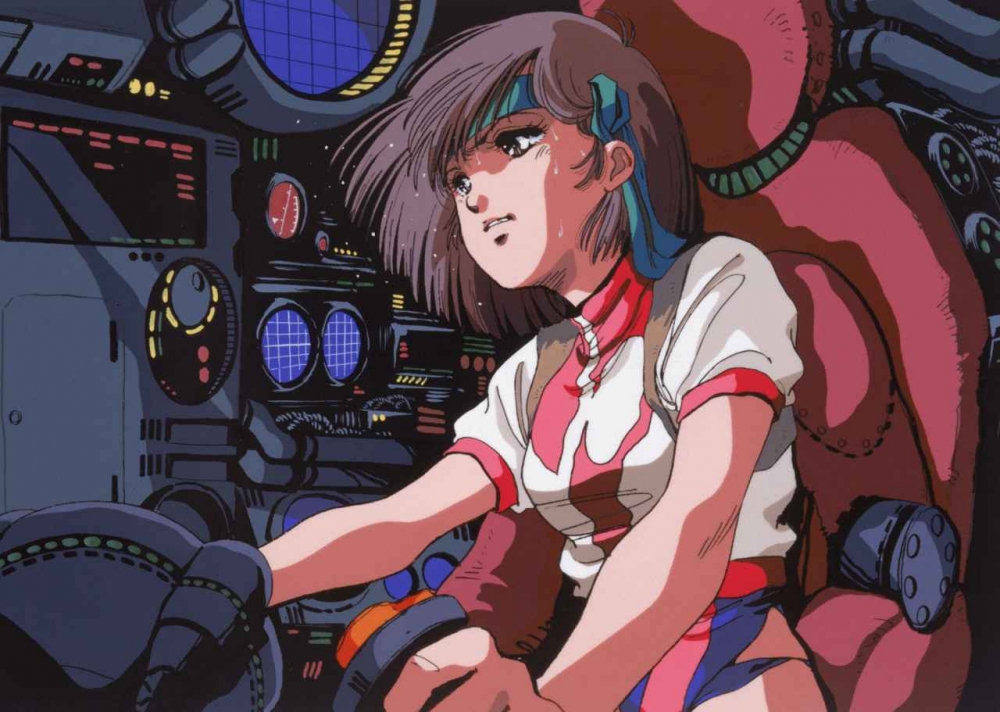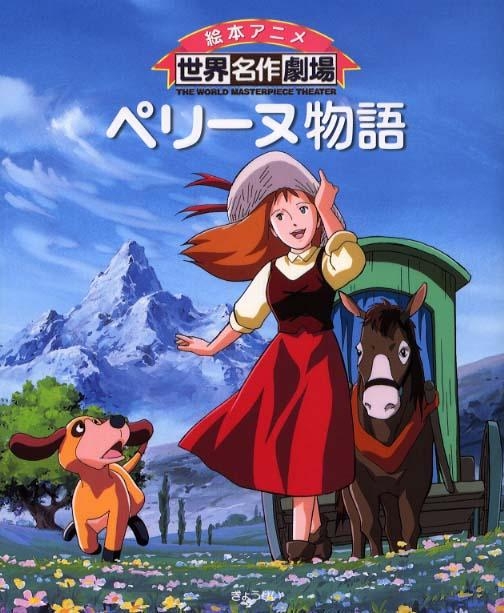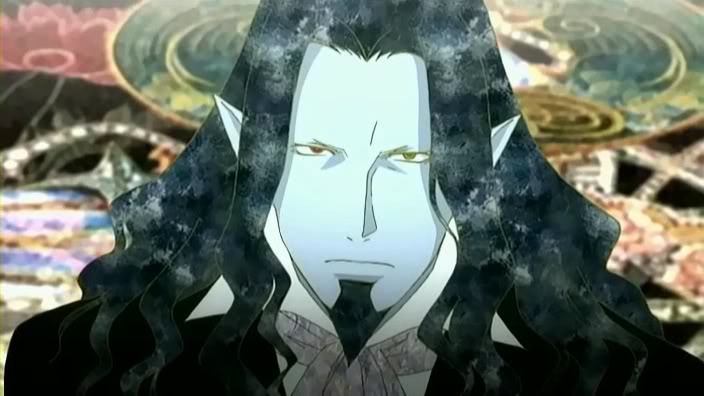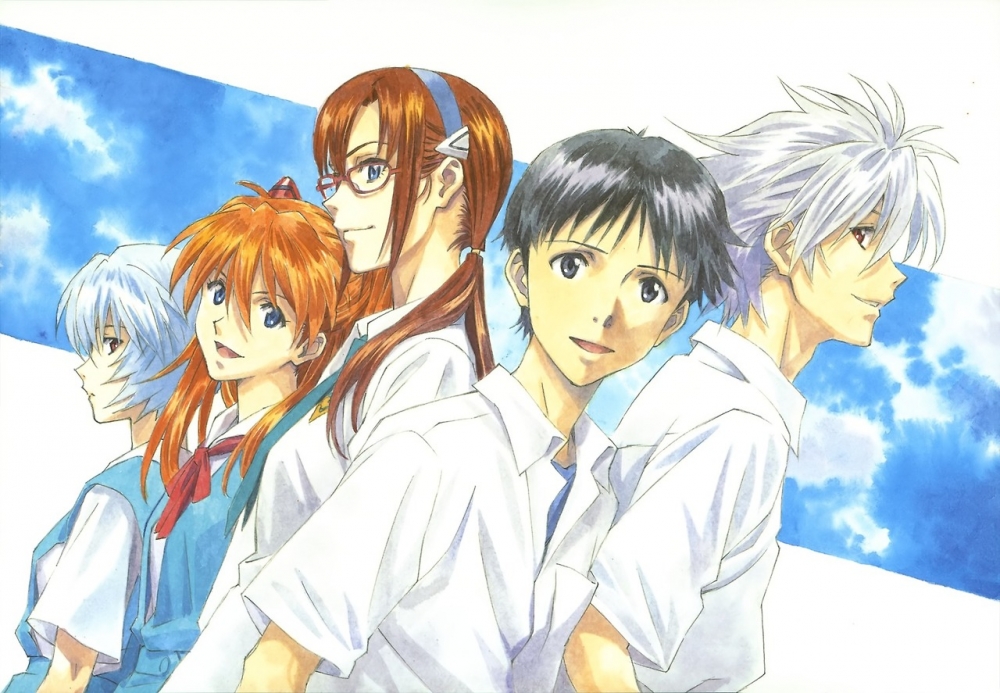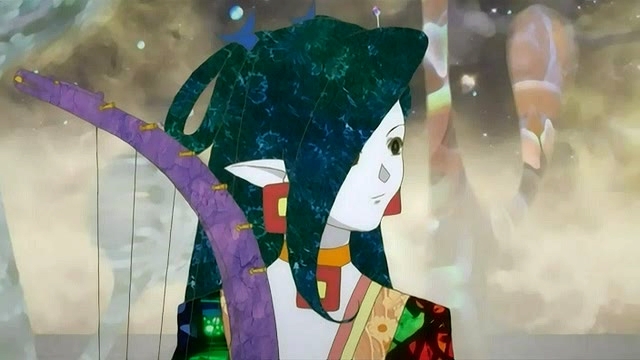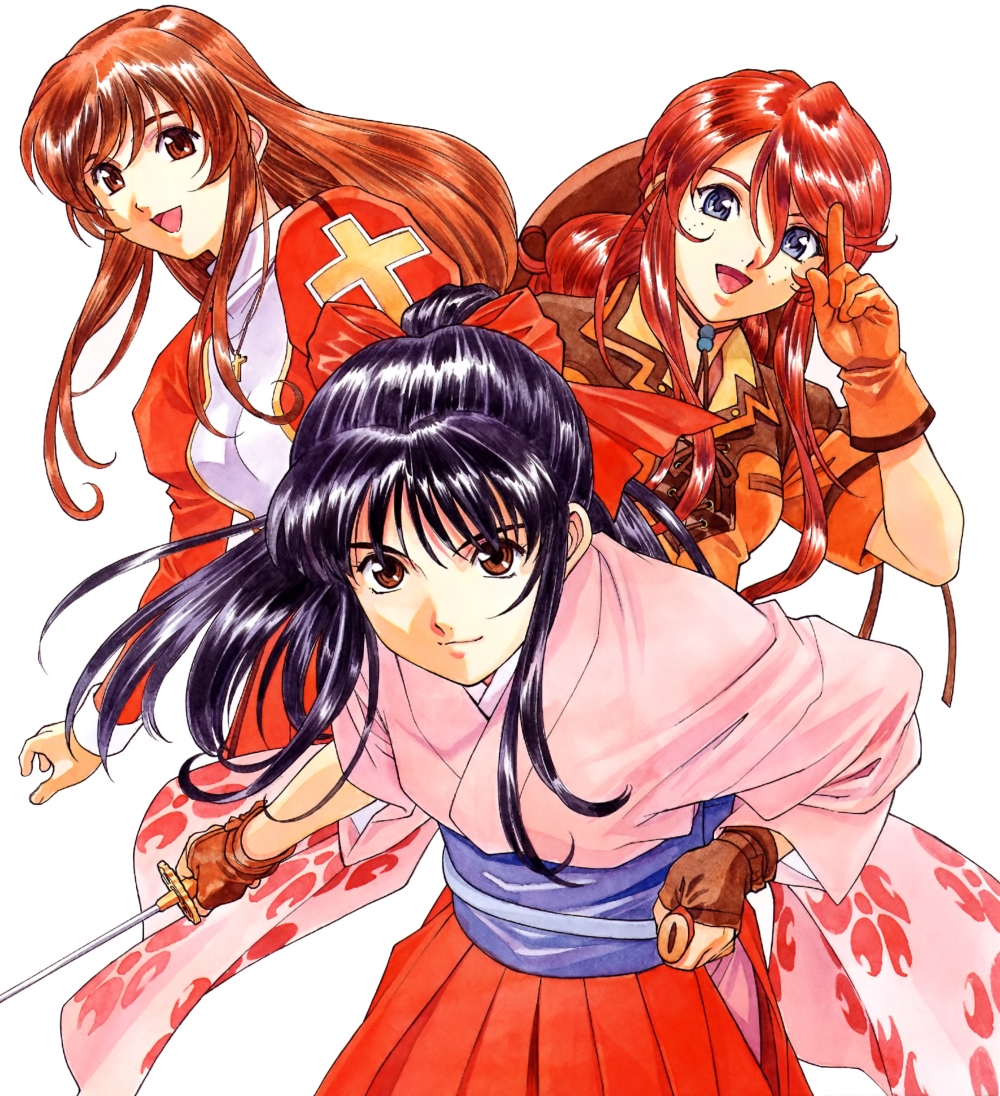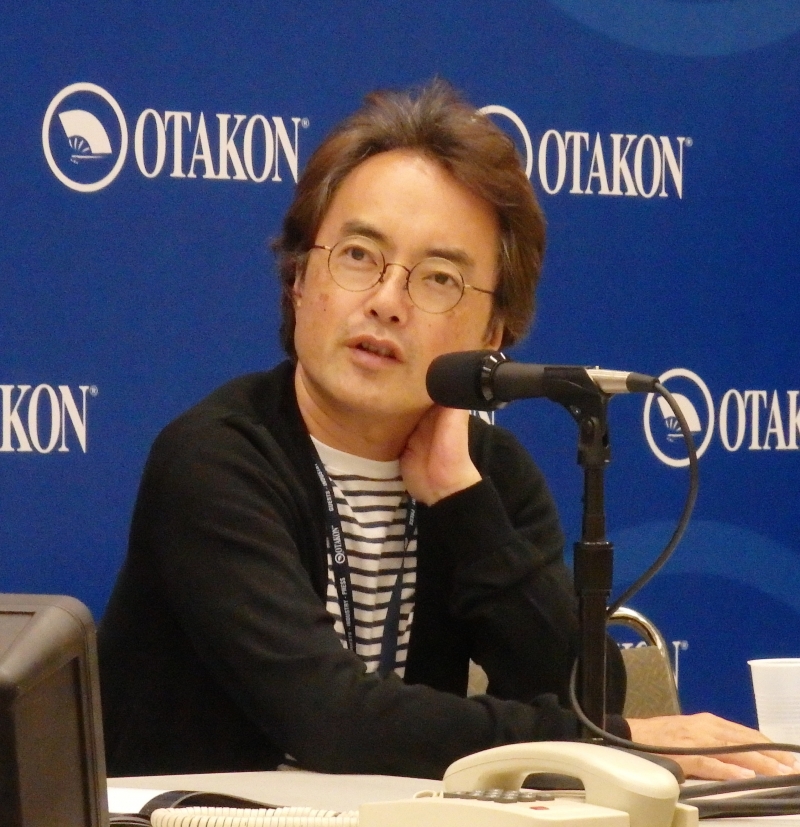 Last weekend we had the privilege of speaking with veteran Japanese animator and character designer Hidenori Matsubara. You may know him from his work as a character designer on Gankutsuou: The Count of Monte Cristo, Ah! My Goddess, and Sakura Wars, but he has also worked as a key animator and animation director on series like Evangelion, Bubblegum Crisis, and Perfect Blue. He’s also part of the team developing director Sunao Katabuchi’s new film at studio MAPPA, In This Corner of the World (we’ve got more on that film in our upcoming con coverage).
Last weekend we had the privilege of speaking with veteran Japanese animator and character designer Hidenori Matsubara. You may know him from his work as a character designer on Gankutsuou: The Count of Monte Cristo, Ah! My Goddess, and Sakura Wars, but he has also worked as a key animator and animation director on series like Evangelion, Bubblegum Crisis, and Perfect Blue. He’s also part of the team developing director Sunao Katabuchi’s new film at studio MAPPA, In This Corner of the World (we’ve got more on that film in our upcoming con coverage).
David sat down for a 15-minute private interview with the artist, and later Evan, Ink, and David all sat in on a public Q&A panel where we threw in some more questions we had for Mr. Matsubara. We’ve included transcripts of both our interview and the Q&A below.
Hearty thanks go out to the Otakon staff, including press and guest staff as well as the translator, who helped organize both events, and of course, Mr. Matsubara himself. Enjoy!
Interview
What kind of reference material do you use when animating something? For instance, when animating a running sequence, do you watch a video of someone running, or observe people in real life?
If I were animating a running sequence, I might use footage, try running myself, or record myself running. I might find someone else to do the running for me and watch that.
How do you act out something that a human may not even be capable of doing?
Well, that just has to come from your imagination. But as for common real-life activities, I often do it myself or film someone else doing it.
As an experienced animator, you’ve moved a lot from studio to studio. What’s the difference in atmosphere and work environment between the studios you’ve worked at?
Well, what people are doing is basically the same…
So it’s indistinguishable?
The people are different. And the amount of mess that’s in the office.
What’s the neatest office you’ve worked at?
Studio Khara [the studio in charge of the new Evangelion films].
Was that just because they were new at the time?
That depends on the managers. It’s not really about new or old; it’s who’s running it.
At least in the Western anime fandom, there’s a fascination with the director Satoshi Kon. You came into the end of the production of Paranoia Agent. What was it like working with Mr. Kon for that little bit?
It was really only a couple scenes. Actually, I was at a rap party, and I had worked with Mr. Kon recently, but it had been a long time since then. At the party he said “your work hasn’t been as good recently.” But he said that scene was done well.
A lot of mechanical animation is now done using 3DCG. What are your thoughts on the transition from hand-drawn, 2-D mecha animation to 3-D animation?
It’s still the same whether it’s drawn by hand or on a computer… And of course, the original designs are still drawn by hand. I guess the animation is more detailed, because it’s done on the computer, but even now, Gundam fight scenes are done by hand. And those are done very well!
Public Q and A Panel
(Audience) Thank you for coming. I’m a big fan of your works, particularly Aim for the Top! Gunbuster. Do you have any good memories from working on Gunbuster?
Here’s an interesting story. While we were working on Wings of Honneamise, the staff was reading the Japanese magazine Animage. They had a feature on the tennis anime Aim for the Ace, and then we said, “oh, as a joke, why don’t we do Aim for the Top?” which is the title of Gunbuster. So it’s kind of weird that the whole anime started off as a joke. Episode 1 was kind of jokey, but then of course the story turned serious, so I thought the difference was very interesting.
Thinking back, that was [Evangelion director] Hideaki Anno’s first directorial work. Before that he was mostly just an artist and animator, so it was really weird watching him work as a director.
This memory wasn’t very fun for me, but I was working too hard on Gunbuster while also working on the first Patlabor movie, and I dropped some of the keyframes, so I feel a little bit bad about that one. That was one of the worst memories in my career.
(Audience) I’ve been following your work for the better part of the last 10 years, and I’m just curious: at what age did you realize that you had to draw?
I guess when I was 5 or 6, when I became conscious of art. I attended the design department of a technical high school, so that was basically when I knew what I was doing with my career.
(Audience) You went to a technical design program? Have you produced any designs besides your character design work?
I designed a dryer. That’s all I remember. I was in the graphic design department. Looking back, there was a class on mixing pastel colors, and that was pretty tough work. You should try it out sometime, just to see, but it’s really hard to manage color. I mean, even after 30 years it’s still on my mind.
(Audience) What inspires your work?
I used to watch a lot of anime as a kid, during the heyday of Space Battleship Yamato. Then the Galaxy Express 999 movie came out when I was in junior high, and that was the first time I became curious about how anime is made.
Before I got involved, I kind of got the feeling that I wouldn’t be able to enjoy watching animation anymore, and I was right. I can’t just watch anymore. Plus, nowadays I’m just too busy to watch.
(Audience) Is there a particular artist or animator that you’ve looked up to in your career?
There are too many animators for me to name right now. But for manga artists, the ones I was reading as a kid: Osamu Tezuka, Moto Hagio, Leiji Matsumoto. That’s basically my generation; they’re all older people. Of course, some of them are still working now. When I was a child I was watching Yamato, 999, Gundam, and an anime called Treasure Island. And of course all the Miyazaki works, especially Future Boy Conan, and the anime directed by Yoshiyuki Tomino before Gundam.
All these are titles most people would list as their favorites. But one of my personal favorites was in the “World Masterpiece Theater,” based on a novel called En Famille. It’s pretty obscure so… [some audience members cheer] oh, you know it! It’s called The Story of Perrine, and that was the sort of thing that made me want to be an animator. Wow, people do know The Story of Perrine? That makes me really happy.
(Ani-Gamers) New animators in Japan often apprentice under more experienced artists. Who did you apprentice under?
I guess when you’re in-betweening you’re basically the apprentice of the key animator. In order to match their art style, you’re watching the the key animators work, and that’s how you get better.
(Ani-Gamers) On projects where you work as a key animator, who typically assigns shots to you?
Usually when you’re a key animator, the director or the animation director picks scenes from a storyboard and says “you do this scene.”
Sometimes directors are like “just pick whatever scene you like.” When I was young I wanted to do action scenes, so I deliberately picked robot fight sequences. But sometimes the director said “no, not that scene, you should do these scenes,” and they were often shower scenes of girls.
That happened a couple times, so I missed out on doing robot scenes, but I became known for doing some girl shower scenes. So now I just say upfront, “I can’t do effects or robot scenes.”
However, after having animated a bunch of young girls, it’s actually more interesting to do some older people, so The Count of Monte Cristo was very interesting.
(Audience) What do you think are the elements of good character design?
Basic art skills and anatomy are important. Does the character look well balanced and, when looking at the range of characters, do they all look the same or does each person look different? Can the designer draw not just the girls and the hot guys, but older people and kids too?
I think what makes a good character is not even design, but direction, so I think of design as really second or third in importance.
After I was drawing all the cute girls, the backlash to that was The Count of Monte Cristo. I was actually relieved that I didn’t have to draw cute people anymore.
(Audience) Now that you’re quite well established as a character designer, do you find that people come to you earlier in the process, and don’t have ideas for characters already in mind when they ask you to create designs?
I guess in this industry you just make friends and acquaintances, and you call on each other, so it really depends on whether it’s the beginning of the project or the middle.
For example, for In This Corner of the World, I was called basically in the middle of the project. They had already been working on it for a couple years.
Sometimes the studio has a character design competition and I just submit work to that. Or sometimes the team that you’re working in, when they have a future project they say “oh, just stay on board.”
(Audience) When designing characters, do directors give you pointers or ideas as to what they want?
It really depends on the director. For some characters they give you a lot of freedom, but for others they’re like, “Oh, it really has to be like this.” For example, Mamoru Oshii, the director, always wanted his main heroines to have really short hair.
(Audience) What can other production departments (such as background artists and mechanical designers) learn from character designers?
When I was working on Ah! My Goddess I thought it was interesting that there were all these cute characters, but the robots in the background were hyper-realistic and the clothing was very detailed. So we had these fantastical elements like goddesses, but all the props and little things were very realistic.
I feel that, no matter how fantastical the story is, if there’s some part that’s based on reality, that tightens it up.
(Audience) Could you describe your experience working on the Eva films? Also, are you working on 4.0?
What kind of things do you want to hear?
Just your favorite experience.
Since Evangelion was already famous as a TV show, the premiere was sort of like a festival, so I guess that was very interesting.
As for 4.0, I’ve left the studio, so I have no idea what’s going on over there. I’ve heard some rumors, but nothing I can share, so I’m sorry.
(Audience) As a key animator working on the Eva films, what was the most challenging scene that you had to animate?
I was a key animator on the third movie. That one was directed by Masayuki, and that guy never found any scene acceptable. He has all these personal stipulations and rules, which made it complicated. When you’re animating something, no matter what title it is, the basics are still the same, but it wasn’t like that for him. For the part I was involved in, the staff was comprised of people who knew what they were getting into, but it was still difficult. When I saw the first two movies, I thought “oh, this is gonna be difficult,” but I was placed in a team, so I just had to suck it up.
(Audience) In contrast to Masayuki, who’s the easiest director you’ve dealt with?
Actually, there aren’t many difficult people, which is why I chose that example. I guess Sunao Katabuchi’s a little bit difficult. He has a lot of demands. When I have a lot of freedom it’s a little easier.
(Ani-Gamers) What was your experience transitioning from traditional animation to digital animation?
For me personally, nothing changed.
I mean in terms of working with a tablet rather than on paper.
I do everything in pencil. I don’t even own a tablet. I did have one at one point and I did three or four illustrations on it, but I just like being able to hold my art in my hands, so I gave up the tablet.
Sure, the ability for it to look cleaned up on a computer is advantageous, but it just doesn’t feel right to me.
(Audience) Depicting weight distribution and center of gravity is very important in bringing characters to life in animation. What techniques do you use to depict weight distribution, and with animators using digital tools today, what advice do you have for them in depicting weight distribution in characters?
I haven’t really made any characters on a computer… I think it’s more useful for designing mecha, not characters. Most designers I know work with pencil and paper, not tablets. Very rarely do they work on computers. But these days they’re starting to use them on titles like Arpeggio of Blue Steel.
In terms of examples of successful CG, I guess Arpeggio is one. Otherwise, there’s the ending of Pretty Cure.
(Audience) Have you ever had an inconvenience like a broken air conditioner or other workplace issue affect your work?
I mean, nothing so extreme, but I guess I’m just used to the mess level in anime studios. I think Studio Khara is the cleanest studio in the industry.
(Ani-Gamers) What techniques did you use to create the clothing effect in Gankutsuou: The Count of Monte Cristo?
There’s a CG computer program that can do that, and when the director Mahiro Maeda first started on the anime he was like, “hey look what we can do with a computer!” So I actually wasn’t involved in that part; it was all Mr. Maeda’s decision. By the time I came on board, they had already decided on that CG program, but the fact that we only had to do the outline of the clothing made it very simple for us.
We created a pilot film as a shoutout to animators to get them to apply to work on The Count of Monte Cristo — to say “the series will look like this.” The keyframes looked really simple, but the finished product was supposed to look more complicated, so all the animators thought it looked deceptively simple, and they thought “maybe it’s supposed to be more difficult than this…” We were surprised when very few people applied!
Once you become good at animation, you start to express more in the sillhouette. And so when the artist isn’t very good they think the fewer lines the better, but actually it’s more difficult.
(Reverse Thieves) We’ve seen your designs for the Tokyo, Paris, and New York troops in Sakura Wars, but while you were doing character design for Sakura Wars, did they have you come up with some ideas for other countries’ imperial troops within the Sakura Wars games? And if they did, which country would you like to make designs for?
Since I’m Japanese, Japanese characters are naturally the easiest. Foreign characters are more difficult.
(Ani-Gamers) You named Space Battleship Yamato as one of your favorite anime series. How did you get involved with Yamato 2199, and what was your reaction to being able to work on the project?
It felt wonderful, of course! I volunteered though. It’s not like they came asking me to be a part of it. I also came in late, so the production schedule was rushed. Initially it was eight months for an episode, but that shrank to two weeks per episode. It feels like I missed out.
Click here for more coverage of Otakon 2014.

